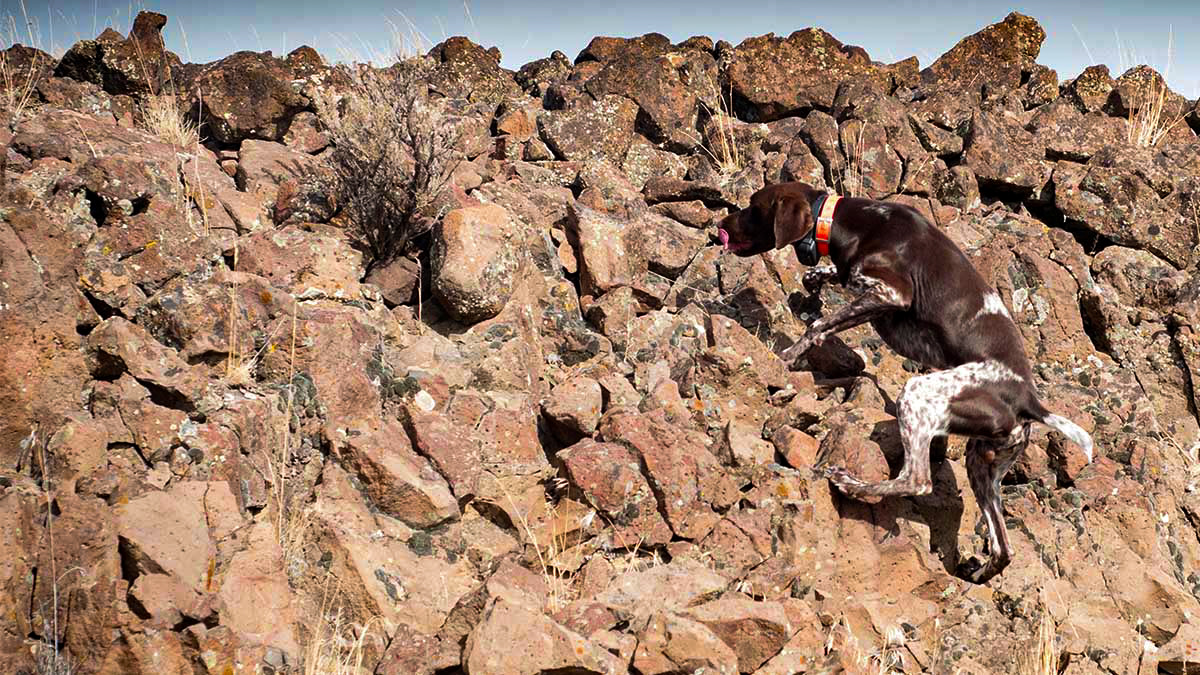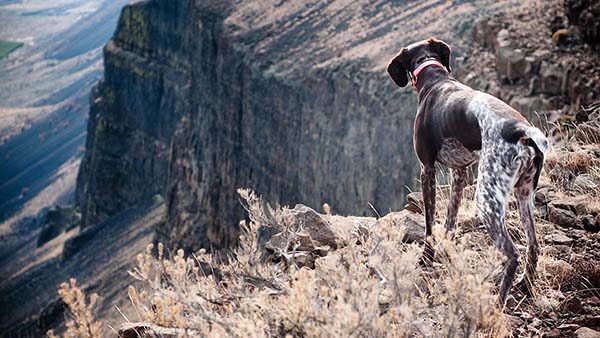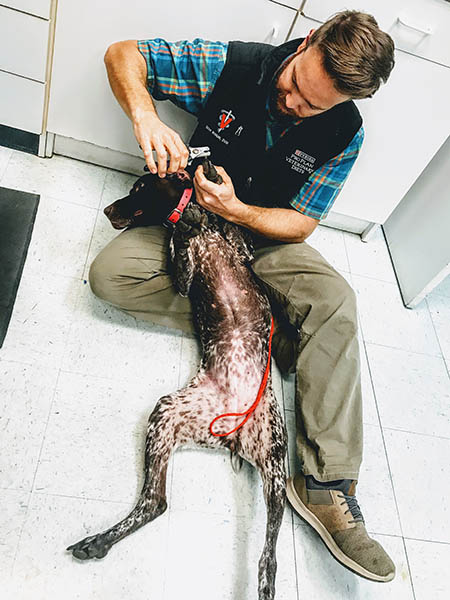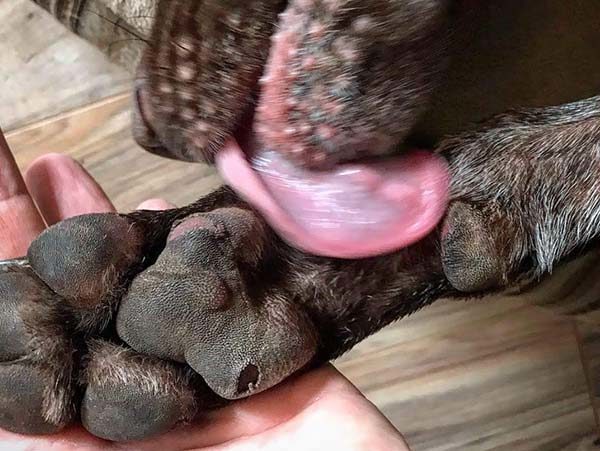
Training and fieldwork creates a special kind of bond between a dog and its owner. But our four-legged friends often find themselves in situations where they need your help. Our new Ask A Vet series delivers advice directly from a professional, working veterinarian. Have a question about your dog? Shoot an email to themeateater@themeateater.com and we’ll dig into the concern.
“My dog’s paws are pretty beat up after coming back from a two-week chukar hunting trip. There are some open sores and I can tell my dog is favoring the pads, but he’s still ramped up for any and every hunting outing.
Should I keep him from getting out until they heal up? And what can I do to help the overall health of his paws, pads, and nails?” -Morgan Mason
As a veterinarian who lives and hunts frequently in the paw-busting lava rock of chukar country, I can empathize with the large number of bird hunters who reach out for help when their bird dog comes up lame. In my experience, foot and pad issues are common in all hunting breeds, and if you’ve come across this article in search of advice, know that you’re not alone. We’ve all been there.

Pad Conditioning and Maintenance
Healthy feet are earned, not gifted. Properly calloused pads that can handle hard hunting in rough terrain come with time and exposure. Humid environments and hunting over soft soil can contribute to fragile pads. Also, if your pup spends six days a week on the sofa, expect some tender feet after a day of hunting in harsh terrain.
When I lived in the rainy deluge of Western Washington State, my pups experienced significant pad abrasions whenever we went on a weekend hunt along the dry, rocky breaks of the Columbia River. Now that we live in a drier climate and frequently hunt in chukar habitat, we rarely have a serious issue, even after a three-day outing.
It shouldn’t come as a surprise that off-season conditioning helps tremendously. The single biggest step you can take to prevent foot and pad injury is keeping your bird dog fit and lean.
The more weight the feet carry, the more friction that occurs between the pad and the turf, leading to a quicker formation of hotspots and abrasions.
Off-season runs, both on- and off-leash, can help keep you both in shape for hunting season. To strengthen pads, those runs should include short, intermittent jaunts on pavement. Make sure you and your vet communicate about this strategy if your bird dog struggles with joint issues or arthritis.
Additionally, proper nail maintenance will help keep your bird dog’s feet healthy and strong throughout the year. Keep nails trimmed short, but long enough to be useful in acquiring purchase on rocks and uneven terrain. In nearly every case of a torn or damaged nail I treat, I can blame long, unruly nails as the prerequisite for injury.

Routine nail trims should already be part of your bird dog husbandry program, but from my experience in the clinic treating torn nails and wrestling unruly pups that have never been conditioned to trimming, most owners neglect this responsibility.
Hunting Boots
I field numerous questions each year on the topic of dog boots, and I have found that opinions vary greatly as to whether these accessories are a useful strategy for preventing foot injuries. Based on experiences with clients and my own dogs, dedicated hunting dog boots can help delay the onset of pad injury.
Correct sizing and fit make a huge difference in performance, but the most important step—and the place where many owners fall short—is properly acclimating your pup to the awkward sensation of wearing boots. In my experience, nearly all bird hunters who have written off boots gave up at the first sign of protest from their hunting dog.
Prepare yourself for bucking, high-stepping, whining or some degree psychosomatic paralysis. It’s temporary; just put them on, tighten them up, and go hunting. I’m confident your pup will get over it with the first whiff of bird scent.
Superglue Use
In the field and after the hunt, I reach for superglue to create a protective barrier over hot spots and to close small pad cracks and lacerations. Start with a compliant dog, dry pads and a pair of latex gloves (it can get messy), then apply a thin coat of glue over the affected area. Allow the glue to dry, then layer it with another coat. Repeat the layering process until the glue forms a thick but pliable barrier over the hotspot.
For small cuts or cracks in the pads, apply the glue to the open edges (not the soft tissue underneath) and hold them closed until they’re secured together. Add a layer of glue over the closed crack for extra protection.

Like most issues related to veterinary medicine, prevention plays the largest role in dealing with a foot or pad issue. While that fact may not sit well with bird hunters who are trying to salvage the remainder of an upland trip after their dog has trashed its pads, there is a silver lining: Feet heal quickly. So, while you’re taking a day off to let your pup lick his or her wounds, file away these foot care strategies for the next hunt.




Conversation